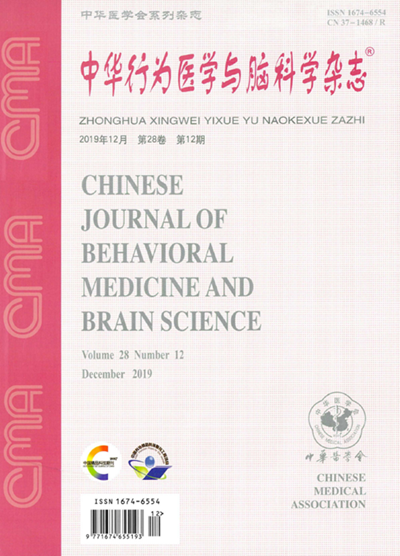智力在听障儿童信息处理速度与数字大小之间的中介作用
引用次数: 3
摘要
目的探讨智力在听障儿童信息加工速度与数值大小加工之间的中介作用。方法采用选择反应时间、数字比较测验和简化版瑞文递进矩阵测验对249名听障儿童进行调查。结果(1)听障儿童的信息加工速度正确率(0.89±0.18)与数值量级加工正确率(0.65±0.15)、智力正确率(11.83±10.34)呈正相关(r=0.165、0.263,P均<0.01)。信息加工速度反应时与数值量级加工反应时、智力反应时呈负相关(r=-0.164、-0.197,P均<0.05)。智力与数值量级加工正确率、反应时间呈显著正相关(r=0.269、0.140,P均<0.05)。(2)信息加工速度正确率对听障儿童数值大小加工正确率有显著预测作用(β=0.17, t=2.64, P均<0.01)。听力障碍儿童信息加工速度反应时间对数值大小加工反应时间有显著预测作用(β=-0.16, t=-2.61, P均<0.05)。智力在这一关系中起完全中介作用,调节效应分别为36.71%和31.25%。结论信息加工速度对听障儿童通过智力处理数值大小有间接影响。关键词:听障儿童;信息处理速度;数值震级处理;情报本文章由计算机程序翻译,如有差异,请以英文原文为准。
The mediating effect of intelligence between the information processing speed and numerical magnitude in hearing-impaired children
Objective
To explore the mediating role of intelligence in the relationship between information processing speed and numerical magnitude processing of hearing-impaired children.
Methods
A survey was conducted among 249 hearing-impaired children by using tests of Choice Reaction Time, Numerosity Comparison, and Raven's Progressive Matrices(simplified version).
Results
(1)The accurate rate of information processing speed(0.89±0.18)of hearing-impaired children was positively correlated with that of numerical magnitude processing(0.65±0.15)and intelligence(11.83±10.34)(r=0.165, 0.263, both P<0.01). The reaction time of information processing speed was negatively correlated with those of numerical magnitude processing and intelligence(r=-0.164, -0.197, both P<0.05). And there was significant positive correlation between intelligence and numerical magnitude processing (accurate rate and reaction time ) (r=0.269, 0.140, both P<0.05). (2)The accurate rate of information processing speed significantly predicted that of numerical magnitude processing in hearing-impaired children(β=0.17, t=2.64, both P<0.01). The reaction time of information processing speed significantly predicted that of numerical magnitude processing in hearing-impaired children(β=-0.16, t=-2.61, both P<0.05). And intelligence played a complete mediating role in this relationship and the moderating effect were 36.71% and 31.25%.
Conclusion
Information processing speed has indirect effects on numerical magnitude processing through intelligence in hearing-impaired children.
Key words:
Hearing-impaired children; Information processing speed; Numerical magnitude processing; Intelligence
求助全文
通过发布文献求助,成功后即可免费获取论文全文。
去求助
来源期刊
自引率
0.00%
发文量
8131
期刊介绍:
"Chinese Journal of Behavioral Medicine and Brain Science" (CN 37-1468/R, ISSN 1674-6554) is a national academic journal under the supervision of the National Health Commission, sponsored by the Chinese Medical Association and Jining Medical College. The journal was founded in June 1992 and was formerly known as "Chinese Journal of Behavioral Medicine" (1992-1993) and "Chinese Behavioral Medical Science" (1994-2008). In 2009, it was renamed "Chinese Journal of Behavioral Medicine and Brain Science" with the approval of the State Administration of Press, Publication, Radio, Film and Television.
The purpose of "Chinese Journal of Behavioral Medicine and Brain Science" is to implement the health and health policies of the Party and the State, implement the principle of combining theory with practice and popularization and improvement, and reflect the major progress in the theory and practical application of behavioral medicine and brain science in my country. It publishes academic papers and scientific research results in the field of behavioral medicine and brain science in my country, and has columns such as monographs/reviews, basic research, clinical research, health prevention, methods and techniques, psychological behavior and evaluation, and systematic evaluation.

 求助内容:
求助内容: 应助结果提醒方式:
应助结果提醒方式:


